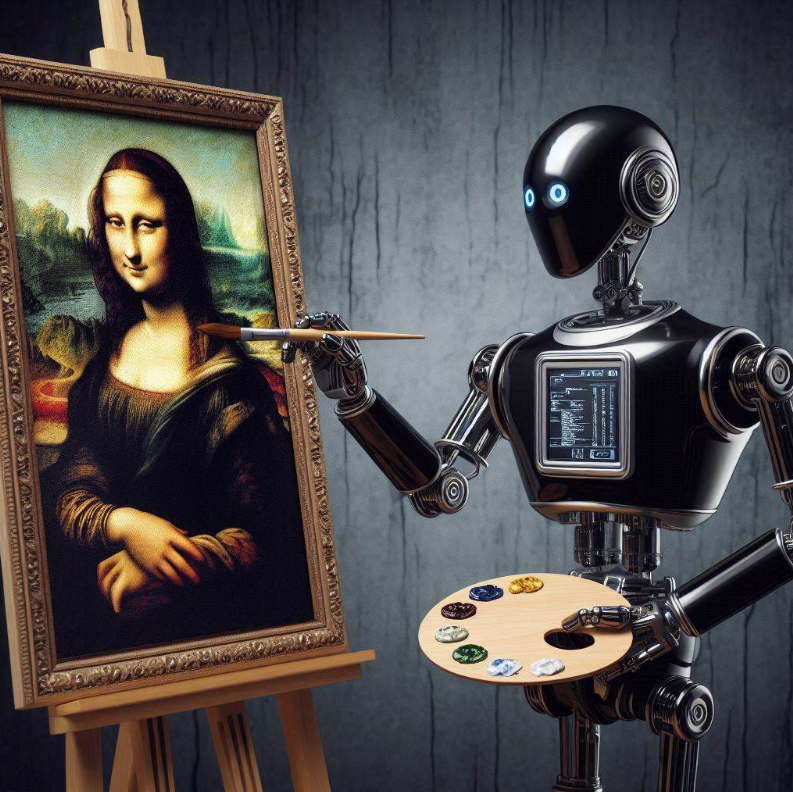For years, we've been told that robots will take over manual labor and repetitive tasks, leaving creative pursuits as the exclusive domain of humans. But the rise of sophisticated AI tools like DALL-E 2, Midjourney, and ChatGPT is challenging that assumption. No longer confined to logic and data processing, AI is now generating stunning visuals, writing compelling copy, and even composing music. This begs the question: are creative jobs safe?
The answer, increasingly, is no. While human creativity and ingenuity are still highly valued, certain artistic roles are becoming increasingly susceptible to automation. Here are five creative jobs that AI is poised to disrupt in the near future:
1. Entry-Level Graphic Design:
Imagine needing a logo for your new online store. Instead of hiring a designer, you type a few keywords into an AI image generator, choose from a selection of impressive options, and customize the final product with a few clicks. This is the reality facing many entry-level graphic designers. AI tools can already create visually appealing designs for websites, social media posts, brochures, and more, often at a fraction of the cost and time.
What AI can do:
-
Generate variations of a design concept: Need a logo in different color schemes or layouts? AI can effortlessly produce countless iterations.
-
Adapt to different styles: Want something minimalist, vintage, or futuristic? AI can adjust its output to match your desired aesthetic.
-
Create basic layouts: AI can arrange text and images in visually appealing ways for brochures, flyers, and web pages.
What AI can't (yet) do:
-
Understand complex design briefs: While AI can follow basic instructions, it struggles with nuanced requests or abstract concepts.
-
Offer original creative thinking: AI relies on existing data and trends, potentially leading to derivative or uninspired designs.
-
Build client relationships and understand their brand identity: Human designers excel at understanding a client's vision and translating it into a cohesive brand identity.
2. Junior Copywriters:
From product descriptions to social media captions, AI is making significant inroads into the world of copywriting. Tools like Jasper and Copy.ai can generate grammatically correct and persuasive copy in seconds, making them a tempting alternative for businesses on a budget.
What AI can do:
-
Write different types of creative content: AI can generate blog posts, articles, website copy, and even scripts for videos.
-
Adapt to different tones of voice: Whether you need something formal, playful, or informative, AI can adjust its writing style accordingly.
-
Optimize copy for SEO: AI can incorporate relevant keywords and phrases to improve search engine rankings.
What AI can't (yet) do:
-
Conduct in-depth research and interviews: Human copywriters excel at gathering information and crafting compelling narratives.
-
Understand complex topics and write with authority: AI often struggles with nuanced or specialized subjects.
-
Inject personality and unique voice: While AI can mimic different writing styles, it lacks the genuine voice and perspective of a human writer.
3. Stock Photographers and Illustrators:
With AI image generators capable of producing stunning, royalty-free images on demand, the stock photography and illustration industry is facing a major upheaval. Why pay for expensive stock photos when you can generate a custom image tailored to your exact needs?
What AI can do:
-
Create realistic and stylized images: AI can generate photographs, illustrations, and even 3D models in a variety of styles.
-
Customize images to specific requirements: Need a picture of a cat wearing a hat in a specific pose? AI can make it happen.
-
Generate variations of an image: AI can easily create different versions of an image with different lighting, angles, or compositions.
What AI can't (yet) do:
-
Capture real-life events and emotions: While AI can generate realistic images, it can't replicate the spontaneity and authenticity of a photograph taken in the real world.
-
Offer a unique artistic vision: AI-generated images often lack the personal touch and individual style of human artists.
-
Understand the nuances of visual storytelling: Human photographers and illustrators are skilled at conveying emotions and narratives through their work.
4. Music Composers for Background Music and Jingles:
Need a catchy jingle for your latest ad campaign or some background music for your YouTube video? AI-powered music generators can create custom tracks in a variety of genres, eliminating the need to hire a composer.
What AI can do:
-
Compose music in different styles: AI can generate music ranging from classical to electronic, jazz to pop.
-
Create custom tracks based on specific parameters: Need something upbeat, melancholic, or suspenseful? AI can tailor the music to your needs.
-
Generate variations of a melody or chord progression: AI can easily experiment with different musical ideas.
What AI can't (yet) do:
-
Compose complex and emotionally resonant music: Human composers excel at creating music that evokes deep emotions and tells a story.
-
Collaborate with other musicians and artists: AI lacks the ability to engage in creative collaboration and improvisation.
-
Understand the nuances of music theory and composition: While AI can generate technically sound music, it may lack the depth and originality of human-composed music.
5. Translators for Simple, Repetitive Texts:
AI-powered translation tools like Google Translate have come a long way, and they're becoming increasingly capable of handling simple, repetitive texts like product descriptions, instruction manuals, and website copy.
What AI can do:
-
Translate text quickly and efficiently: AI can translate large volumes of text in a fraction of the time it would take a human translator.
-
Handle multiple languages: AI translation tools can often translate between dozens of different languages.
-
Improve accuracy over time: As AI models are exposed to more data, their translations become more accurate and nuanced.
What AI can't (yet) do:
-
Translate literary or creative texts: Human translators are essential for capturing the nuances of language and style in literature, poetry, and other creative works.
-
Understand cultural context and adapt translations accordingly: AI may struggle with idioms, humor, and other culturally specific elements.
-
Provide quality assurance and editing: Human translators are still needed to ensure that translations are accurate, consistent, and culturally appropriate.
The Future of Creativity in the Age of AI
The rise of AI in creative fields is not necessarily a cause for panic, but it does signal a need for adaptation. While AI excels at automating repetitive tasks and generating basic creative outputs, it still lacks the human touch – the ability to truly understand and respond to complex emotions, cultural nuances, and abstract concepts.
To thrive in this new landscape, creatives will need to embrace AI as a tool, leveraging its capabilities to enhance their own work and focus on tasks that require uniquely human skills like critical thinking, empathy, and creative problem-solving. The future of creativity is not about man vs. machine, but rather a collaborative partnership where humans and AI work together to achieve new heights of artistic expression.


